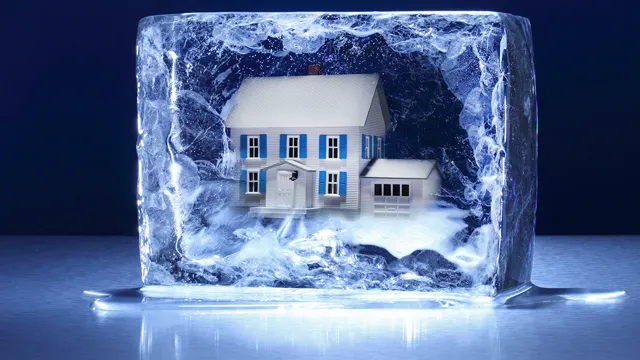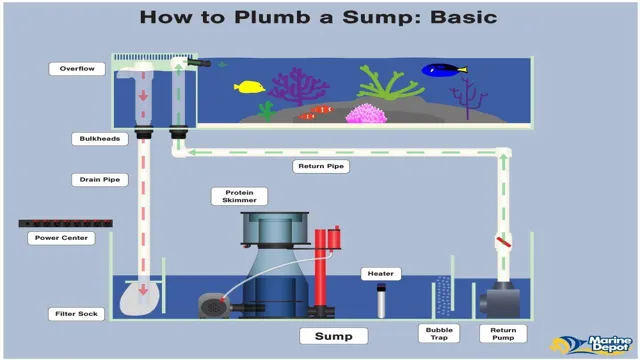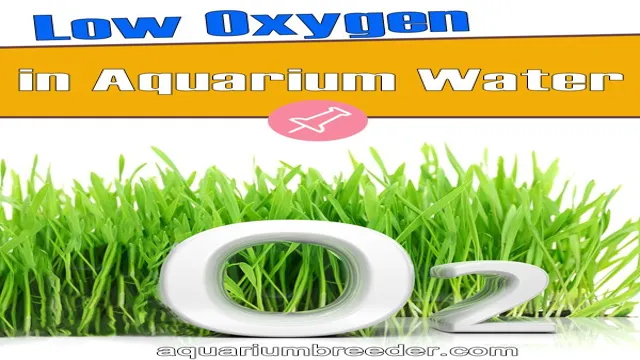Are you struggling to maintain the water quality in your aquarium? Do your fish seem stressed or sickly despite your best efforts? If so, you may be overlooking a critical aspect of aquarium care: water chemistry. Water chemistry refers to the specific balance of chemical compounds and elements present in your aquarium’s water. In order for fish and other aquatic creatures to thrive, the water chemistry must be appropriate for their specific needs.
Getting your aquarium’s water chemistry right is essential for creating a healthy, sustainable environment for your fish. It involves monitoring and adjusting pH levels, hardness, and nutrient levels to ensure that your fish have everything they need to survive and thrive. Maintaining the right water chemistry can be a delicate balancing act, but with the right knowledge and tools, it’s entirely possible.
In this blog, we’ll cover everything you need to know about achieving perfect water chemistry in your aquarium. From testing your water to making adjustments, we’ll provide actionable tips and advice to help you create a thriving aquatic ecosystem.
Importance of Water Chemistry
Getting the correct water chemistry for your aquarium is essential in providing a healthy and suitable environment for your aquatic pets. Water chemistry refers to the parameters of the water in your aquarium, such as pH, alkalinity, ammonia levels, and nitrate levels. pH is especially crucial as the wrong pH level can adversely affect the health of your fish.
You should aim for a pH level between 5 and 5, as this is the pH range that most fish species thrive in.
You can adjust the pH using aquarium buffers or by the addition of driftwood. It’s important to regularly test your water parameters and make adjustments accordingly to avoid problems such as algae growth and the death of your fish. By maintaining the correct water chemistry, you ensure a healthy and thriving aquatic environment for your pets.
How Water Chemistry Affects Your Fish
As fish owners, we all know that maintaining water chemistry is crucial for our aquatic companions. Water chemistry plays a significant role in the overall health and well-being of your fish. It’s vital to ensure that the pH levels, hardness, and alkalinity of aquarium water are within the ideal range for your fish species.
Poor water chemistry can lead to fish stress, illness, and even death. So, it’s essential to monitor and control the pH and other chemical levels in your aquarium. Even a slight fluctuation in water chemistry can negatively impact your fish’s health.
In summary, the importance of water chemistry cannot be overstated when it comes to keeping your fish healthy and happy.

Benefits of Correct Water Chemistry
When it comes to maintaining a swimming pool, keeping the water chemistry balanced is essential. The importance of water chemistry cannot be overstated, as it not only keeps the pool water clean and clear but also ensures the safety and health of swimmers. Proper water chemistry helps to prevent the growth of harmful bacteria and algae, which can cause skin and eye irritation, unpleasant odors, and even illness.
Additionally, balanced water chemistry helps to protect pool equipment from corrosion and damage, extending the lifespan of the pool and its components. Over time, neglecting water chemistry can lead to costly repairs or even necessitate the replacement of entire pool systems, so it’s important to stay on top of regular testing and maintenance. With the right balance of pH, alkalinity, and chlorine, you can enjoy a safe and healthy swimming experience all summer long.
Understanding Water Chemistry
Getting the correct water chemistry for your aquarium is crucial for the health and well-being of your aquatic pets. Testing the pH, ammonia, nitrite, nitrate, and water hardness levels is important in creating a stable environment. The pH levels should be between
5 and 5, and the ammonia levels should be at zero. Nitrite levels should also be at zero, while nitrate levels should be under 40 ppm. (See Also: Is Clear Gorilla Glue Aquarium Safe? Expert Answers and Tips)
Water hardness varies depending on the type of fish you have, so research their specific needs. Keep in mind that sudden changes in water chemistry can be harmful to your fish, so make adjustments in small increments over time. Consider adding a buffer or conditioner to keep the pH levels consistent.
Maintaining the correct water chemistry will not only ensure the health of your fish, but also create a beautiful and thriving underwater world.
pH and Its Effects
pH Have you ever wondered why some bodies of water are too acidic, while others are too basic? That’s because of the pH level! pH is a measurement of how acidic or basic a substance is. In water chemistry, pH measures the concentration of hydrogen ions present and ranges from 0 to 1 Water with a pH level of 7 is considered neutral, while anything below 7 is acidic, and anything above is basic.
Changes in pH levels can have adverse effects on aquatic life, such as reduced ability to absorb nutrients, reproductive difficulties, and even death. That’s why it’s crucial to maintain a balanced pH level to ensure the survival of aquatic creatures and their habitats. So, the next time you go for a swim or fishing, check the pH level of the body of water.
It could be the difference between life and death for some aquatic creatures.
Ammonia and Nitrite
Water chemistry plays a crucial role in maintaining a healthy aquatic environment for your fish. One important aspect of water chemistry is the levels of ammonia and nitrite present in the water. Ammonia is produced by fish waste and uneaten food, while nitrite is produced by beneficial bacteria breaking down ammonia.
High levels of ammonia and nitrite can harm your fish and cause stress, illness, and even death. It is essential to test your water regularly and ensure that the levels of ammonia and nitrite are within safe limits. There are several ways to reduce ammonia and nitrite levels, such as using a biological filter, performing regular water changes, and avoiding overfeeding your fish.
By understanding water chemistry, you can provide your fish with a healthy and thriving environment. Remember, a happy fish is a healthy fish.
Nitrate and Phosphate
When it comes to water chemistry, it’s important to understand the impact of nitrate and phosphate levels. These two chemicals are essential for plant growth, but at high levels, they can cause problems for aquatic ecosystems. Nitrate is a source of nitrogen, which is needed by plants for photosynthesis.
However, excessive nitrate concentrations can lead to eutrophication – a process where algae blooms occur, leading to oxygen depletion in water and potentially causing fish kills. Phosphate is another important nutrient for plant growth, but like nitrate, high levels can cause algal blooms and contribute to eutrophication. Both nitrate and phosphate can be introduced to water systems through fertilizer runoff and sewage discharge.
Therefore, it’s important to monitor their levels in water bodies and take steps to reduce any excessive concentration to maintain a healthy aquatic ecosystem.
Water Hardness and Alkalinity
Water hardness and alkalinity are common concerns for homeowners and businesses alike. Hard water is caused by high levels of minerals such as calcium and magnesium, while alkalinity refers to the water’s ability to neutralize acidity. Both factors can have negative effects on plumbing, appliances, and even clothing.
Hard water can lead to scale buildup and decreased efficiency in appliances, while high alkalinity can cause corrosion and damage to plumbing. Testing and treatment options are available to address these issues, such as water softeners and pH adjusters. It’s important to understand the chemistry of your water in order to prevent damage and maintain a healthy environment for yourself and your property. (See Also: How to Clean an Aquarium That Has Soap in It: The Ultimate Guide for Spotless Fish Tanks)
Testing Your Aquarium’s Water Chemistry
When it comes to maintaining a healthy aquarium, one of the most important things to keep track of is the water chemistry. But testing your aquarium’s water chemistry can feel overwhelming if you aren’t sure what to look for. The first and most crucial step is investing in a reliable test kit that can measure pH, ammonia, nitrite, and nitrate levels.
These four factors directly affect the health and wellbeing of your aquatic creatures. It’s essential to keep these levels in balance to ensure the water is safe for your fish, plants, and other organisms to thrive. By testing regularly and adjusting as needed, you can ensure that your aquarium’s water chemistry provides a safe and healthy environment for all its inhabitants.
It’s also crucial to avoid adding new fish or plants until you know your water chemistry is in balance, as it can disrupt the delicate ecosystem you’ve worked so hard to build. So, with the right tools and some diligence, it’s possible to get the correct water chemistry for your aquarium and keep it that way.
Types of Tests Available
Testing your aquarium’s water chemistry is crucial to ensuring that your aquatic pets are living in a healthy environment. There are different types of tests available that can measure various levels of chemical compounds in the water. One of the most common tests is the pH test, which measures the acidity or alkalinity of the water on a scale of 1-1
Another important test is the ammonia test, which measures the level of toxic ammonia that can harm aquatic life. Nitrate and nitrite tests are also important to monitor, as high levels of these compounds can lead to algae growth and poor water quality. Testing for dissolved oxygen levels is also important, as fish and other aquatic life require oxygen to survive.
Other tests that may be necessary include testing for copper, iron, and chlorine levels. Regular testing and maintenance of your aquarium’s water chemistry can help prevent potential health problems for your aquatic pets and maintain a healthy ecosystem.
How to Perform Tests Accurately
Performing accurate water tests on your aquarium is crucial to maintain a healthy environment for your fish. Testing the water chemistry involves measuring essential elements such as pH, nitrite, nitrate, and ammonia. To ensure accurate results, it is important to follow the instructions on the testing kit carefully.
Rinse all equipment with distilled water to prevent contamination and take care not to cross-contaminate the samples. Test your water at the same time every day, as water conditions can fluctuate throughout the day. It is also essential to know your aquarium’s volume for precise measurements.
Regular testing will help you identify any issues before they become serious and allow you to take corrective action to prevent fish illness and death. Remember to record all your test results to keep track of any changes in water chemistry over time. With careful attention to detail, you can ensure a healthy and thriving aquarium ecosystem for your fish.
Adjusting Water Chemistry
Getting the correct water chemistry for your aquarium can often seem like a daunting task, especially for beginners. However, with a little bit of knowledge and the right tools, it can be quite simple. The first step is to test your aquarium water regularly using a reliable testing kit to monitor parameters such as pH, ammonia, nitrite, and nitrate levels.
Based on the results, you can make adjustments using chemical treatments, such as pH adjusters or ammonia removers. It is important to note that sudden changes in water chemistry can be harmful to your aquarium inhabitants, so any adjustments should be made gradually and carefully. Additionally, keeping up with regular water changes and maintaining a properly functioning filtration system can go a long way in maintaining a healthy and balanced aquatic environment.
Overall, getting the correct water chemistry for your aquarium requires patience, consistency, and an understanding of your specific aquatic community’s needs. (See Also: How to Make a Wood Aquarium Stand: A Step-by-Step Guide for Aquarists)
Conclusion
In conclusion, achieving the perfect water chemistry for your aquarium is no easy feat. It requires a delicate balance of pH, temperature, and proper nutrient levels. To achieve this, regular water changes, proper filtration, and maintaining a close eye on your aquatic friends will ensure their optimal health.
As they say, a happy fish is a healthy fish, so take the extra time and effort to create a thriving aquatic paradise for your underwater buddies. Dive into the world of water chemistry and watch your fishy friends flourish in their aquatic kingdom!”
FAQs
What are the key parameters to monitor for maintaining proper water chemistry in an aquarium?
The key parameters to monitor for maintaining proper water chemistry in an aquarium are pH, ammonia, nitrite, nitrate, alkalinity, and hardness.
What is the ideal pH level for an aquarium?
The ideal pH for most fish species is between 6.8 and 7.8. However, some specific species may require a slightly different pH level.
Can tap water be used in aquariums?
Tap water can be used in aquariums, but it needs to be treated with a water conditioner to remove any chlorine or chloramines that can harm fish or plants.
How often should water changes be done in an aquarium?
Regular water changes should be done every 1-2 weeks, depending on the size of the aquarium and the number of fish and plants.
What is the recommended temperature range for an aquarium?
The recommended temperature range for most tropical fish is between 75-82°F (24-28°C).
What is the ideal water hardness level for an aquarium?
The ideal water hardness level for an aquarium depends on the type of fish being kept. Generally, soft water (low hardness) is preferred for most freshwater species.
How can I test the water chemistry of my aquarium?
You can test the water chemistry of an aquarium using a water test kit, which measures the levels of pH, ammonia, nitrite, nitrate, alkalinity, and hardness.







